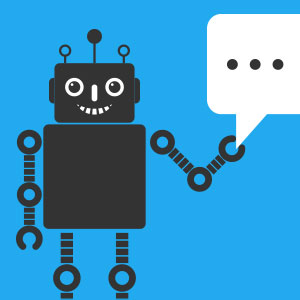
From Star Trek’s Data to Star Wars’ C-3PO, the idea of humanoid robots has fascinated people for years. Back in the real world, robots build automobiles in factories, mow lawns, and even assist in complex heart surgery. Meanwhile, the use of androids like Data is approaching reality, as semiconductor and semiconductor-related devices like low-power microprocessors, 3D sensors, accelerometers, and gyroscopes combine to create a new generation of social robots that can interact and communicate with humans.
Help at Home
The first social robot for the home was created by MIT’s associate professor Cynthia Breazeal. “Jibo” takes pictures, reminds parents of their kids’ activities, and is designed to become part of the family. As Jibo gets to know you by recognizing your face, he will even extend a greeting and tell a joke. Two recently introduced home robots are social debutantes “Kuri” and “Mykie.” Kuri, developed by Mayfield Robotics, incorporates a camera, microphone array, touch sensors, speakers, and a laser-based sensor array to navigate and detect obstacles. Kuri can monitor your home remotely, respond to voice commands such as “read the kids a bedtime story,” and more. Mykie (short for “My Kitchen Elf”) from Bosch is a concept for a personal assistant robot that interfaces with kitchen appliances and takes you through recipes while projecting images and videos for guidance.
Robots in Healthcare and Business
One care home in Florence, Italy, is already using Robot-Era to help care for 20 of its elderly residents by running cognitive stimulation activities and providing walking support. In Japan, researchers are developing Robear, a high-tech robot nurse with the face of a teddy bear that uses intelligent vision and giant arms to help people stand or to lift them from bed into a wheelchair – back-breaking work for human caregivers. Countries including the United States and Denmark are using social robots to help children with autism. These kids may find interacting with people challenging and be more comfortable with robots, who are working alongside therapists to help with development of social skills. Robots can also monitor eye movements in young children, helping with early diagnosis of the disorder.
Elsewhere, a bank in Japan employs a robot to give out basic information, such as how to open an account. Waiter robots have been “employed” in China since 2014 with varying degrees of success. Some can even cook and serve food and ask customers to move out of the way. Less skilled robots have been “fired” for failing to transport soup safely and continually breaking down.
Adding Human-Like Qualities
Scientists are beginning to push the boundaries with life-like robots, even exploring how human emotions may be incorporated. For example, Nadine is a social robot with her own personality, mood, and emotions, developed by Professor Nadia Thalmann at Nanyang Technological University, Singapore. Nadine looks human, converses with people, adapts responses to negative or positive comments, and remembers previous conversations. ChihiraKanae, a humanoid robot created by engineers at Toshiba, looks life-like and speaks 19 languages, while Henn-na Hotel near Nagasaki, Japan, is reportedly the world’s first hotel to be staffed by multi-lingual robots, in addition to a life-like robot receptionist.
Social robots offer some interesting and helpful applications. As more creative uses are developed, we may soon find that the imaginations of science fiction writers were not so far from reality after all.
![]()
Read other articles in this series:
- Silicon Snack: Technology in Medicine Is Just What the Doctor Ordered
- Silicon Snack: eSports Are Taking the Field
- Silicon Snack: AR/VR Changing How We Learn
- Silicon Snack: Precision Farming Fueled by Big Data
- Silicon Snack: Pilotless Passenger Jets More than a Blue-Sky Idea
- Silicon Snack: Brushing Up on Art Restoration
- Silicon Snack: New World of Possibilities Delivered with Drones
- Silicon Snack: On the Ball with Sports Tech
- Silicon Snack: Stepping Out with Smart Shoes
- Silicon Snack: Food Preparation – Taste the Future
Editorial Note: The use of any company, product, or trade names is for descriptive purposes only and does not imply endorsement by Lam Research Corp. or its subsidiaries.